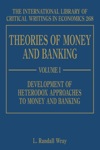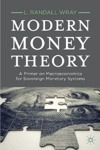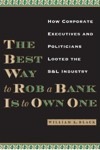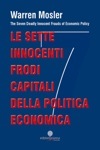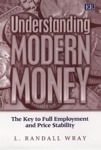(via the Huffington Post, where it first appeared)
I passed up the obvious title: “Heckuva Job Larry!” That was the moment of President Obama’s appearance on The Daily Show with Jon Stewart that set all Americans cringing. Yes, he really said that Summers “did a heckuva job.” The candidate that was gifted the opportunity to run against the legacy of one of the worst presidents in U.S. history has, as president, used Bush as his role model to continue many disastrous policies. It was strangely fitting that he would channel Bush’s infamous praise (“Heckuva job Brownie”) for the FEMA chief who failed New Orleans so badly in the hurricane.
President Obama understandably wishes to focus attention on the economic disaster he inherited from President Bush. But Jon Stewart’s question to him, which led to the president’s gaffe, correctly asked about the message that Summers’ appointment sent about the administration’s commitment to fundamental change.
Summers had financial red ink on his hands at the time he was appointed. He was Rubin’s chief minion in the successful effort to defeat effective financial regulation and supervision. (Yes, the effort was bipartisan and the Republican leadership shares in the guilt.) Summers was not simply wrong, but also arrogant and brutal, in blocking effective regulation at the SEC and the Commodity Futures Trading Commission. Summers was made rich by Wall Street in one of those sordid consulting arrangements designed to buy influence and reward past and future favors.
President Obama’s appointment of Summers as his chief economic advisor made the administration’s overall response to the crisis predictable. (Robert Kuttner gives a detailed explanation of the policies that Rubin’s protégés championed in his new book, A Presidency in Peril.) The response would follow the disastrous Japanese model that has harmed their economy and damaged their integrity. The dominant characteristics can be summarized quickly: (1) the government would act for the benefit of the largest financial firms and their CEOs, even when they directed massive frauds, by (2) engineering a cover up of the banks’ losses and the CEO’s misconduct; (3) the administration would use the fictional reports generated to conduct the cover up to declare victory (due to their brilliance); and (4) the same strategy would impair the recovery. (For more on the cover up, see here and here.)
The strategy was also an assault on integrity, the rule of law, and the core precepts of the Obama campaign for president. This is why we warned from the beginning that the cover up could enrage the nation and make him a one-term president.
********
President Obama on Wednesday night told Jon Stewart that the administration had resolved the crisis for a pittance — vastly less than their measure of the costs of resolution in early 2009. He also claimed that the administration deserved credit for preventing a second Great Depression.
The first claim is too good to be true. Ask yourself the key analytical question: Does the administration claim that the crisis proved far worse or far better than its original estimates? Look at the administration’s initial estimates about employment or its initial views about how deep the fall in housing values, and how quick their recovery, would be? The administration has repeatedly emphasized that the housing and employment crises are significantly worse than initially forecast. That means that their initial loss estimates should have proven significantly too low. The losses should be much greater than their initial estimates.
Losses on homes are not driven only by employment and housing values. Mortgage fraud causes dramatically greater losses. How much mortgage fraud did the administration initially estimate? That’s almost a trick question, for the administration rarely uses the “F” word (fraud) and gave no evidence at the time of its initial estimates that they took into account fraud losses. Since the time of the administration’s initial loss estimates it has become indisputable that fraud was endemic in liar’s loans and that liar’s loans were not simply enormous, but also far more common than was originally reported. We have discovered since the administration’s initial loss estimates that it was common for the SDIs to lie about the liar’s loans they originated, sold, and purchased. Fannie, Freddie, Lehman and many others falsely called their liar’s loans “prime.”
What else could affect losses on liar’s loans and CDOs backed by liar’s loans? The failure of the secondary market meant that sales of CDOs and packages of liar’s loans had to be individually arranged. Has the secondary market in nonprime mortgages been restored since the administration’s initial cost estimates? No. That is important because the administration initially claimed that the secondary market’s collapse was a temporary liquidity problem. The administration anticipated that the secondary market would soon reemerge. It died more than three years ago. With any luck it will never be resurrected. Once more, the changes since the time of the initial loss estimate should have led to greater losses than the administration’s initial estimate.
This leaves us with two analytical puzzles. First, since the administration’s anti-regulators have spent nearly two years carefully not looking at the liar’s loans and determining their true value and the true incidence of fraud, how is the administration estimating losses without the facts necessary to make estimates? Second, ignoring the first problem for the moment, what miracle made virtually all the losses disappear — at virtually no cost to the public — even though every aspect of the administration’s initial loss estimates proved too optimistic? Logically, the losses should be far greater. For the administration’s claim to have any merit they must have discovered the ultimate “silver bullet” that slays $2 trillion in losses. So what is it — and how did it save $2 trillion? It certainly wasn’t their brilliant negotiation of the TARP terms. Any commercial lender that provided such an unlimited guarantee would have cut a far better deal.
There was no silver bullet. The administration made the losses disappear the old-fashioned way — with fictional accounting. I have already explained how the administration allowed the Chamber of Commerce, American Bankers Association, and the Fed to enlist the Congress to extort FASB to pervert the accounting rules so that most of the SDIs’ losses disappeared. The Fed also took over a trillion dollars in toxic, largely fraudulent collateral — and carefully avoided conducting due diligence to discover either the value or the fraud incidence of the collateral. In essence, the Fed took the toxic stuff off the balance sheets.
Creating fictional numbers and hiding losses at the Fed doesn’t reduce losses. Unfortunately, it increases real losses. First, it leaves the looters in charge, lets them pay themselves enormous bonuses, and lets them cause greater losses. Recall George Akerlof’s and Paul Romer’s title — Looting: the Economic Underworld of Bankruptcy for Profit. They showed that even without a bailout the fraudulent CEO could grow wealthy by destroying “his” bank. With a bailout — and the Bush and Obama administration’s de facto grant of impunity and an unlimited guarantee to the SDIs — the CEOs can loot without it leading inevitably to bankruptcy. This has made banking an even more criminogenic environment for accounting control fraud and will cause recurrent, intensifying crises.
Second, accounting cover ups prevent markets from clearing. That prolongs the recession. Japan shows how severe this problem can become.
Third, integrity is important. I really shouldn’t have to explain this. It depresses me that I have to argue that it is wrong to lie. Our democracy, our economy, our society, and our souls depend on restoring our integrity and the rule of law. Randy Wray and I have proposed a step that would demonstrate the president’s complete repudiation of Summers’ strategy and a return to the rule of law: Place Bank of America in receivership for its tens of billions of dollars in fraudulent loans and its multitude of foreclosure frauds. Don’t talk about doing the right thing — do it — and do it to a major contributor. Don’t do it because it’s a contributor, but because a bank that commits tens of thousands of frauds should immediately be placed in receivership.
The president told Jon Stewart he was hamstrung by tradeoffs. He said he could not place an SDI in receivership because it could cause 100 banks to fail. Randy and I explained the absurdity of this claim in our two-part essay. Receiverships do not cause one hundred banks to fail. The receiver would continue the bank’s operation and pay the checks. Why are 100 banks supposed to fail when their correspondent bank ties remain functional, the checks clear, and the ATMs work? This parade of horribles has never happened.
The administration claimed that it was vital that the Dodd-Frank bill provide it with receivership powers so that it could close a future Lehman without causing cascade failures. Now, the president tells us that he refused to follow the Prompt Corrective Action law and close insolvent SDIs because some official lied to him and told him that operating (not closing) a bank through a receivership would cause 100 banks to fail? That’s why Obama has allowed the SDIs to operate with impunity and provided them with an unlimited federal guarantee? And he, a skilled lawyer, cannot see the contradiction in Treasury — his Treasury — claiming that the Dodd-Frank bill’s grant of receivership powers would prevent such cascade failures?


